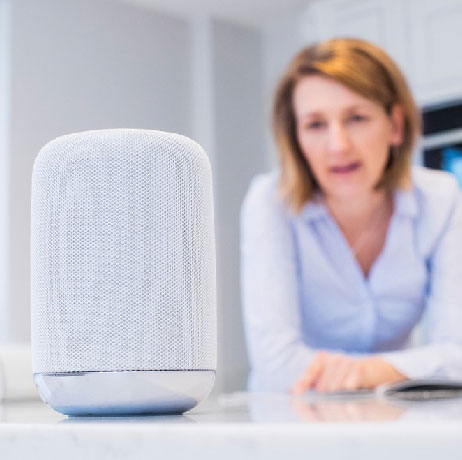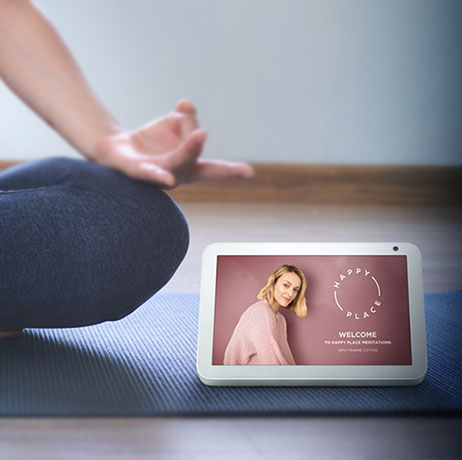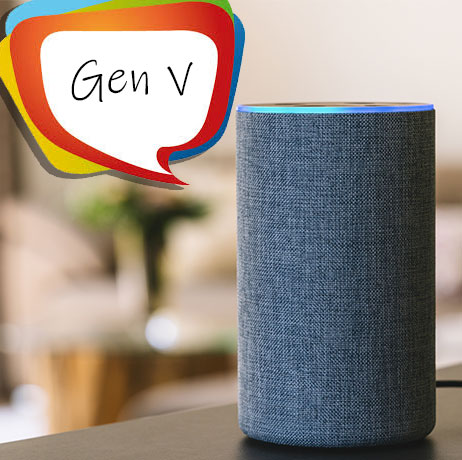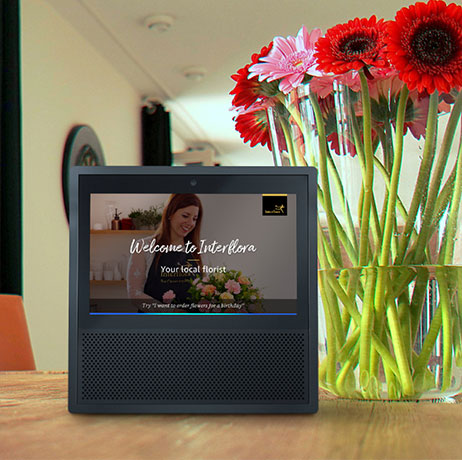If you were to list some of the most frequently used terms within brand marketing you would no doubt see the phrases ‘share of voice’, ‘call to action’, ‘tone of voice’, ‘word of mouth’ and ‘brand storytelling’ up there. What these all have in common is the spoken word and it’s no coincidence. At the very heart of a successful brand strategy is connection and engagement with the chosen audience and there is no better way to create a meaningful relationship with someone than through actual conversation.
Enter voice technology, offering brands the opportunity to engage in conversation with customers via smart speakers and other emerging devices. Set to be the fasted adopted technology in history, there are already more than 12.5 million smart speakers in the UK with ownership and usage growing fast.
Brand marketers dedicate endless hours and budget to developing their brand’s ‘tone of voice’ but in the new era of voice technology a brand can now, literally, have a voice. One that is always on, 24-7, responsive, engaging and ready to add value to the customer experience. With people now expecting more meaningful relationships with brands, leveraging voice technology will put brands on the front foot in developing a role in the customer’s life and building loyalty.
Until now, much of the focus in brand development has been spent on logos, fonts, colours and imagery, but building a brand identity is about more than looks. You only have to consider McDonalds’ ‘I’m Loving It’ jingle, which is recognised all over the world, to see the power of ‘sonic branding’ which transcends visual identity. MasterCard has just spent two years and $15 million developing a sonic brand identity as part of a strategy aimed at a branding future with less visual real estate where voice assistants and smart speakers are front and centre.
Developing a voice presence will allow brands to be heard as well as seen but it will require marketers to ask the question ‘what does my brand sound like?’, as consumers shift to a voice-first world. Some of the more obvious considerations will be whether to be represented by a masculine or feminine voice, young or old and building in brand heritage like accents and dialects. You would expect a brand like Yorkshire Tea to have a voice assistant with a Yorkshire accent and for Guinness to leverage its Irish roots in voice, but there are many more opportunities to deliver elements of brand personality through voice.
Ocado’s Alexa Skill uses friendly, informal language to inject warmth and familiarity into its brand, responding to users with phrases like “okey dokey” and “over and out”. Marketers can choose to use humour, drama or even particular slang words and phrases which will, not only deliver a message about their brand, but connect with target audiences and communities in a more personal and natural way.
In this new voice era the traditional campaign ‘call to action’ takes on a new level of meaning. A customer’s simple call out to Alexa can give them the ability to action a multitude of possibilities without having to lift a finger. For a brand to offer this kind of service and flexibility as part of its customer interaction is a powerful way create a meaningful connection and lasting impression. Some of the biggest consumer brands are now including a call to action driving consumers to their voice experiences. Virgin Trains, Domino’s Pizza and Just Eat have all implemented big budget multi-channel marketing campaigns encouraging people to ‘Ask Alexa’.
Beyond promotion of the voice experience itself, brand marketers can now direct users to perform other actions via voice response all from within a skill or voice experience creating a deeper brand experience. Interactive audio ads within podcasts, in skill purchase options and subscription services now allow users to get more information, engage further and receive added value, all through voice.
At the end of 2019 Interflora launched the UK’s first Voice Commerce or ‘V-Commerce’ skill allowing customers to order and pay for flowers using only voice. But they went beyond a simple functional transaction to add value for the customer with a brand assistant ‘personal shopper’, flower care advice, tips, recommendations and personalisation features.

Whatever the brand purpose or personality there is an opportunity to deliver voice-activated, interactive content which will enhance the brand-to-customer relationship. Brands can entertain their customers with puzzles and games or provide useful productivity tools, advice and info. They can stimulate their creativity with ideas and recipes or deliver pure news and brand storytelling. Regardless of the industry or sector, the possibilities for the consumer and the brand are endless and there for the taking.
-
Written by:
Rob Stanbridge
-
Posted on:
12-01-2020
-
Tags:
#Alexa Skills #opinion #marketing #brands #voice









